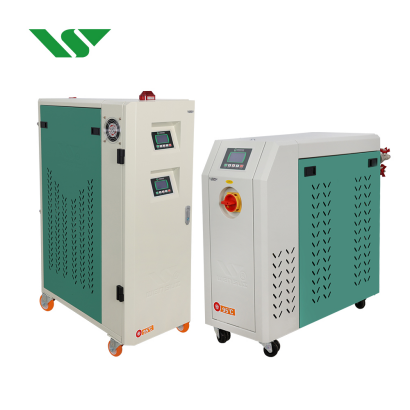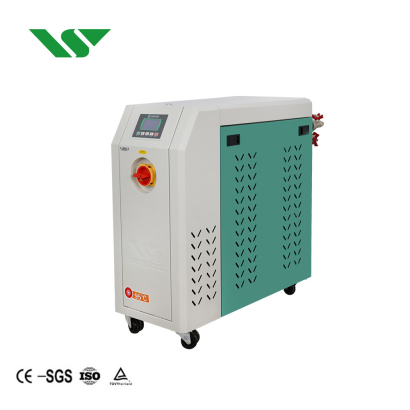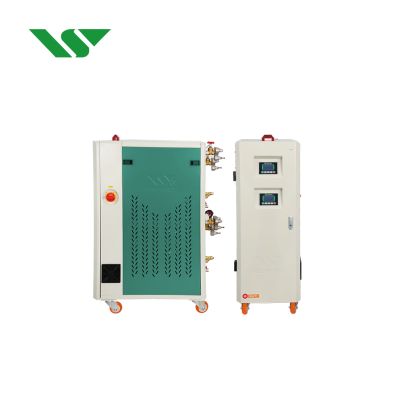How Mold Temperature Controllers Enhance Plastic Production Efficiency and Quality
2024-10-24 Page view:
Mold temperature controllers are crucial components in the plastic manufacturing process, designed to maintain precise mold temperatures during production. Controlling the mold temperature ensures high-quality plastic products, optimizes production efficiency, and reduces waste. This article explores the key benefits of mold temperature controllers and their role in improving various aspects of plastic production.

How Mold Temperature Controllers Improve Plastic Flow
One of the primary functions of a mold temperature controller is to optimize plastic flow by maintaining an ideal mold temperature. When the mold is too hot, the plastic becomes overly fluid, which can lead to rough surfaces or dimensional inaccuracies. On the other hand, if the mold is too cold, the plastic may become too rigid, making it harder to fill the mold and increasing the risk of defects. By carefully regulating the temperature, mold temperature controllers ensure the plastic flows smoothly, creating a high-quality final product.
The Role of Mold Temperature Controllers in Cooling Efficiency
The cooling process is critical in injection molding, as it determines the final shape and strength of the plastic product. Mold temperature controllers play a key role in managing this phase, as they control how quickly the plastic cools within the mold. An optimized cooling process prevents issues such as warping, shrinkage, or uneven surfaces. By ensuring uniform cooling, mold temperature controllers help to enhance the dimensional accuracy and overall quality of the product.

Reducing Production Time with Precise Temperature Control
A major benefit of using mold temperature controllers is the potential to shorten production cycles. By quickly preheating the mold and providing steady temperature control throughout the process, these devices help to reduce downtime and speed up production. Manufacturers can produce more units in less time without compromising quality, ultimately increasing overall efficiency and output.
Lowering Defect Rates and Minimising Waste
Inconsistent mold temperatures often lead to production errors such as incomplete filling, visible defects, or weak points in the plastic. These issues can result in higher scrap rates, adding to production costs and material waste. Mold temperature controllers reduce these risks by keeping the temperature within the optimal range, which minimizes defects and ensures higher consistency across production batches.

Environmental Impact and Energy Efficiency
Another advantage of modern mold temperature controllers is their ability to improve energy efficiency in plastic production. By precisely managing the heating and cooling cycles, they reduce unnecessary energy consumption. This not only lowers production costs but also aligns with environmental sustainability goals. Advanced controllers use high-quality materials and efficient heating elements, further enhancing energy savings while maintaining high performance.
Conclusion.
Mold temperature controllers play an integral role in plastic manufacturing by improving product quality, optimizing production speed, and reducing waste. Through precise temperature regulation, they enhance plastic flow, control cooling efficiency, minimize defects, and contribute to more energy-efficient operations. As the industry continues to evolve, mold temperature controllers will remain essential in driving more efficient and sustainable production processes.



